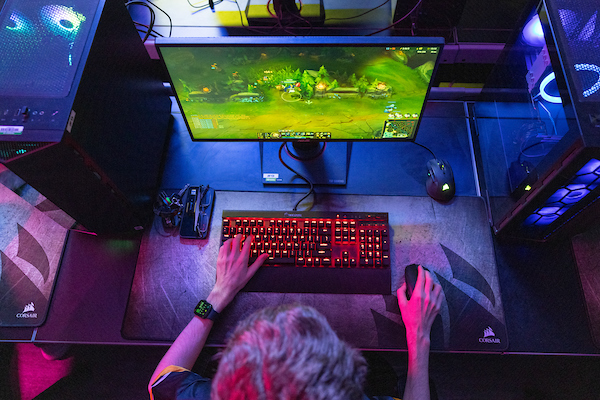Computer Game Design and Development
Learn More About Computer Game Design and Development
Admission Requirements
None.
This program does not have specific admission requirements. Only admission to Kennesaw State University is required to declare this major.
General Education Core IMPACTS Curriculum Recommendations for this Major
M: Students should take MATH 1113 or higher.
T: Students should take MATH 1179 or higher.
T: Select two course pairs from the following (8 Credit Hours): CHEM 1211/L, CHEM 1212/L, PHYS 1111/L*, PHYS 1112/L, PHYS 2211/L*, PHYS 2212/L, BIOL 1107/L, or BIOL 1108/L. *Students cannot take both PHYS 1111/L and PHYS 2211/L nor PHYS 1112/L and PHYS 2212/L.
Degree Progression Requirements
Progression through the program requires students to successfully complete or transfer the equivalent of CSE 1321, CSE 1321L, CSE 1322, and CSE 1322L with a grade of ‘B’ or better in all four courses.
Double Owl Pathways
Related Minor or Certificates Available
- Computer Game Design & Development Minor
Sample Classes
-
CGDD 4003: Digital Media and Interaction
This course explores how digital media is created and utilized within computer games and simulations. Topics include sound, video, text, images, character modeling, animation, game world and level generation (2D and 3D), and current and emerging interaction techniques. Students are required to work in teams to produce a multimedia term project.
-
CGDD 4113: 3D Modeling and Animation
This course explores the theory and application of 3D geometric model generation and animation. Topics include mesh and Non-uniform Rational B-Spline (NURB) modeling, textures, subdivision and levels of model detail, rigid/constrained body dynamics, and non-rigid/fluid dynamics. Students will be required to develop and animate a complex model, and a significant project is required
-
CGDD 4242: Agent-Based Artificial Intelligence
This course introduces students to the key concepts of Artificial Intelligence in single-agent, adversarial, and multi-agent systems. This includes topics such as agency, knowledge representation, searching, planning, algorithms, and machine learning in both single and multiple agent scenarios. The students will also apply this knowledge to games, serious games, and simulations and implement their solutions within serious game and simulation environments such as Unity or Unreal.
-
CGDD 4603: Production Pipeline and Asset Management
This course provides an in-depth exploration of the production of media content. This course covers elements of the production pipeline from concept to content generation to post production and quality assurance. Topics include asset creation and management, cost-quality tradeoffs, and phases of production. Current and emerging models of the production pipeline such as user-generated content and participation will also be discussed. A significant, team-based project is required.












